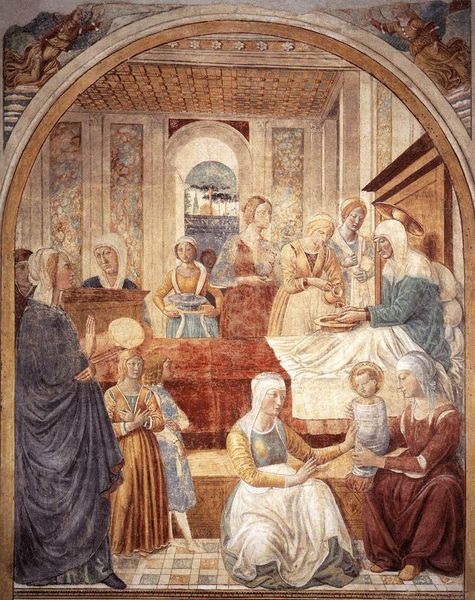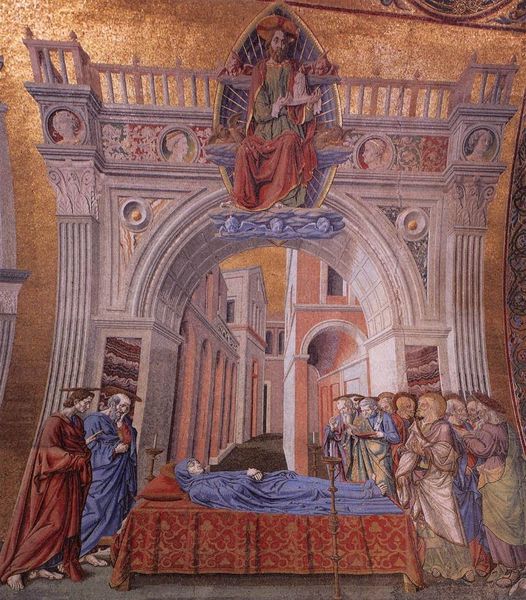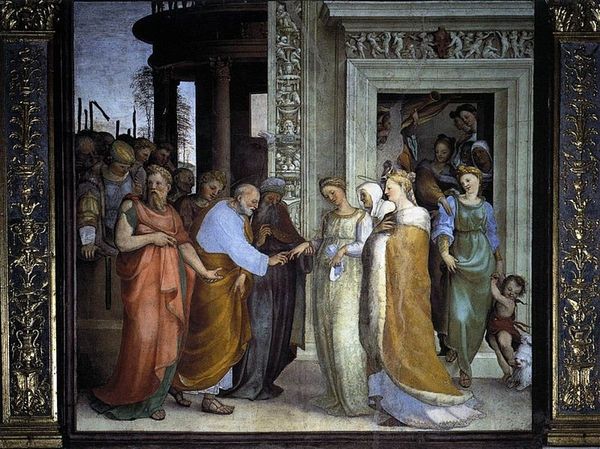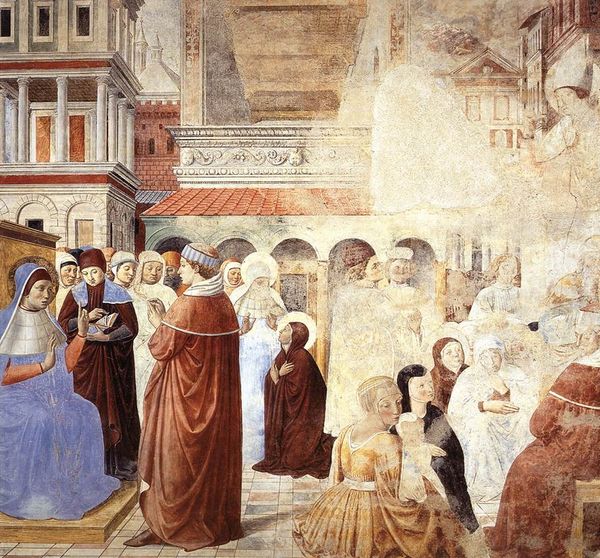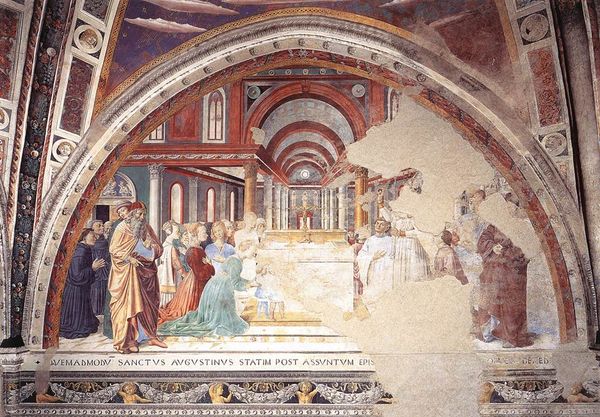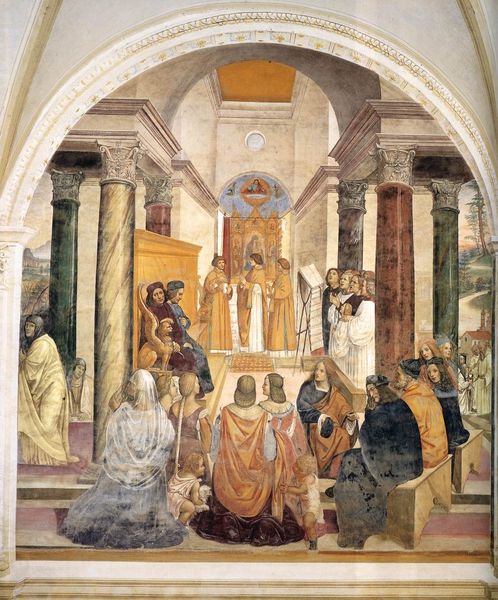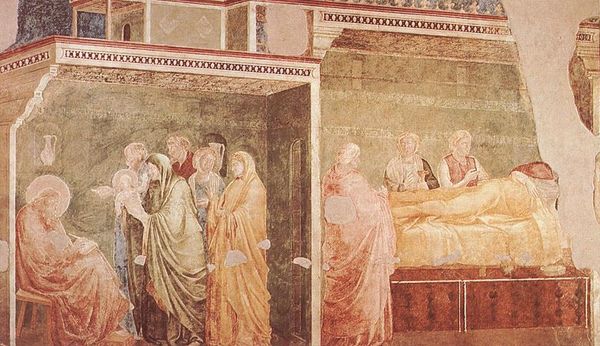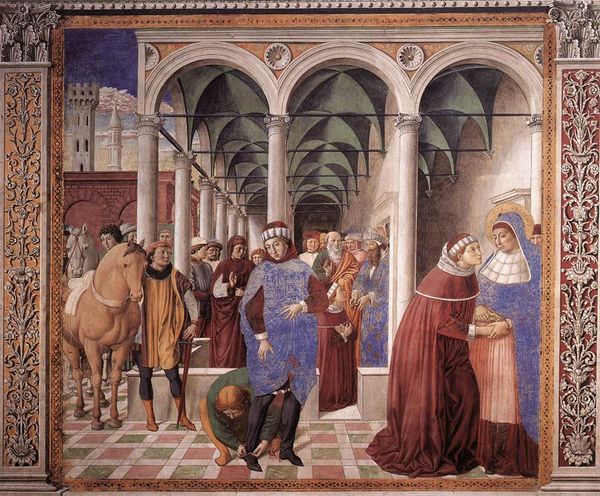
textile, fresco
#
allegory
#
narrative-art
#
sculpture
#
textile
#
holy-places
#
figuration
#
fresco
#
christianity
#
men
#
history-painting
#
italian-renaissance
#
early-renaissance
#
mixed media
#
christ
Copyright: Public domain
Curator: Here we have a fresco by Filippo Lippi, completed around 1465, titled "Disputation in the Synagogue". The composition unfolds like a stage play. What are your initial thoughts? Editor: My immediate impression is one of staged drama. There's a deliberate layering of figures and architectural elements that creates a sense of depth but also of societal tension. The stark contrasts between the bright clothing and somber faces intrigue me. Curator: The layering, or perhaps staging, can also be analyzed in terms of a compositional device common to Early Renaissance painting, that of contrasting interior and exterior space, each holding figures crucial to the narrative. Editor: Exactly! The juxtaposition of the figures in various states – the kneeling figure in supplication, the chained individual – is clearly a comment on the power structures within 15th-century Florentine society. Lippi uses them as tools for allegory. Curator: A sharp observation. Note the meticulous detailing of vestments, the geometric precision of the architecture, and the way Lippi deploys light to create visual focal points that guide the viewer's eye through the scene. It’s quite masterfully structured to direct the narrative. Editor: I’m particularly drawn to the figure in chains, confined and isolated. It symbolizes societal restraints and a certain brand of helplessness, a poignant reflection on institutional authority of that time. Curator: This representation carries great weight in discussions around public piety during the Italian Renaissance. Religious structures were, of course, tightly intertwined with political and social systems. Editor: Understanding art as part of history is key. Each work is not just what we see in form, but also a document reflecting, and actively shaping, the values and ideas of its moment. Curator: Absolutely, art can act as both a reflector of its society and also as an agent to reinforce or challenge accepted norms of that society. Lippi achieves this very adroitly in “Disputation in the Synagogue,”. Editor: The balance that he achieves between historical and political commentary coupled with masterful employment of texture and scale truly stands out. It provides the painting a dynamism, but also invites our analysis of its message.
Comments
No comments
Be the first to comment and join the conversation on the ultimate creative platform.

